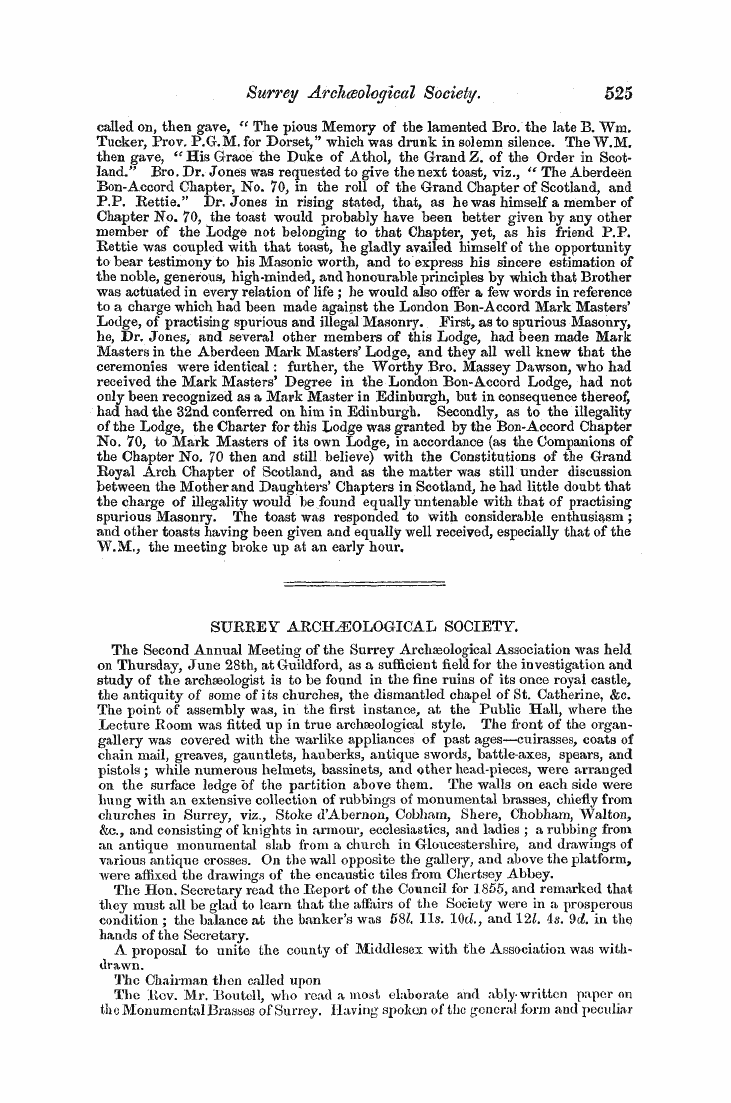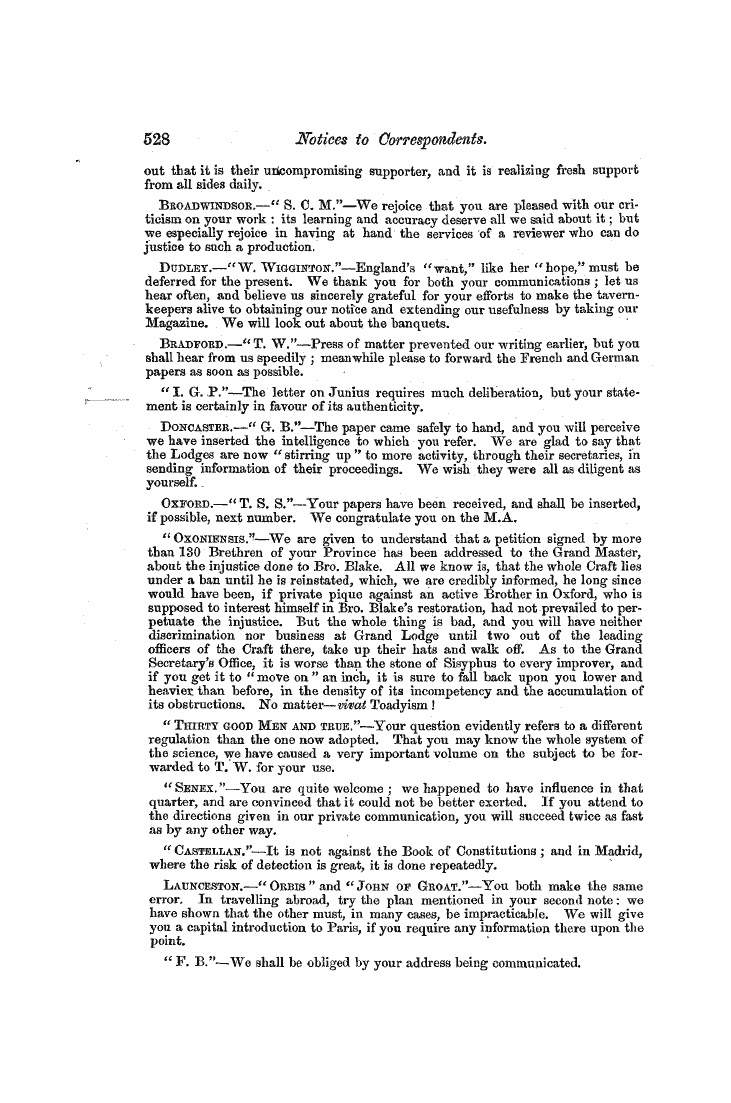-
Articles/Ads
Article Untitled Article ← Page 4 of 7 →
Note: This text has been automatically extracted via Optical Character Recognition (OCR) software.
Untitled Article
. Here , then , wte have some mechanical notion of the materials out of which the machinery , of life is constructed . The words atom , attraction , repulsion , and inertia will convey to the thinking mind all that need be recollected of the primary properties of matter concerned in the mechanical movements of the living frame .
But matter has chemical properties , which must also be considered . These are very simple in their nature , though complicated in their variety . They concern only the terms atom and attraction . If every atom had an equal degree of attraction for every other atom , there would be no such science as chemistry . Chemistry , therefore , is the science which treats of the special affinities of the atoms of matter , the doctrine of preferences , and the effects of combination or atomic
union . In order to understand the difference between chemistry and mechanics , it must be understood that the atoms of which we have spoken are elements or simple bodies , containing matter which can ^ not be divided either by mechanical force or chemical action . Now , these atoms have weight ; they are therefore subject to the attraction of gravitation or cohesion , a law which inclines them to approach each other with a force increasing in a geometrical ratio inversely proportioned to their respective distance from each othei ; . But these
atoms are not all composed of a similar kind of matter . An atom of sulphur , for example , is very different from an atom of charcoal , or of
lead , or of oxygen . Now , there is between these different atoms another kind of attraction besides that of cohesion or gravitation , viz ., chemical attraction or affinity , which exists between atoms of a dissimilar kind , and when , by virtue of this attraction , they unite ,-a very different kind of body or atom is the result ; and in forming
the body there is required a definite proportion of the original atoms , different in each case , thus ;—An atom of sulphur , united with three atoms of oxygen , forms
an atom of sulphuric acid . An atom of nitrogen , combined with five atoms of oxygen , forms an atom of nitric acid , & c . & c . The laws of chemical attraction are not so simple as the laws of mechanical attraction ; but it will suffice for our present purpose to observe that the materials of organic life , flesh , bone , sinew , & c , are subject to both chemical and physical laws ; and , moreover , they are subject to vital laws , which differ from both . Thus , the subject
becomes involved m greater difficulties as we proceed ; and if we word to dive more deeply in this direction , we should get out of the depth
of precisely that class of readers whom , being uninitiated , we are most anxious to interest and to teach . Enough has been said by way of introduction to the question , What is the difference between living matter and dead ?
1 . We observe a difference of structure . All living beings are endowed with a peculiarity of structure , which is adapted to the performance of the appropriate vital functions of each . The machinery of life far surpasses all other mechanism , in beauty , symmetry , contrivance , convenience , usefulness . The science which treats of this
Note: This text has been automatically extracted via Optical Character Recognition (OCR) software.
Untitled Article
. Here , then , wte have some mechanical notion of the materials out of which the machinery , of life is constructed . The words atom , attraction , repulsion , and inertia will convey to the thinking mind all that need be recollected of the primary properties of matter concerned in the mechanical movements of the living frame .
But matter has chemical properties , which must also be considered . These are very simple in their nature , though complicated in their variety . They concern only the terms atom and attraction . If every atom had an equal degree of attraction for every other atom , there would be no such science as chemistry . Chemistry , therefore , is the science which treats of the special affinities of the atoms of matter , the doctrine of preferences , and the effects of combination or atomic
union . In order to understand the difference between chemistry and mechanics , it must be understood that the atoms of which we have spoken are elements or simple bodies , containing matter which can ^ not be divided either by mechanical force or chemical action . Now , these atoms have weight ; they are therefore subject to the attraction of gravitation or cohesion , a law which inclines them to approach each other with a force increasing in a geometrical ratio inversely proportioned to their respective distance from each othei ; . But these
atoms are not all composed of a similar kind of matter . An atom of sulphur , for example , is very different from an atom of charcoal , or of
lead , or of oxygen . Now , there is between these different atoms another kind of attraction besides that of cohesion or gravitation , viz ., chemical attraction or affinity , which exists between atoms of a dissimilar kind , and when , by virtue of this attraction , they unite ,-a very different kind of body or atom is the result ; and in forming
the body there is required a definite proportion of the original atoms , different in each case , thus ;—An atom of sulphur , united with three atoms of oxygen , forms
an atom of sulphuric acid . An atom of nitrogen , combined with five atoms of oxygen , forms an atom of nitric acid , & c . & c . The laws of chemical attraction are not so simple as the laws of mechanical attraction ; but it will suffice for our present purpose to observe that the materials of organic life , flesh , bone , sinew , & c , are subject to both chemical and physical laws ; and , moreover , they are subject to vital laws , which differ from both . Thus , the subject
becomes involved m greater difficulties as we proceed ; and if we word to dive more deeply in this direction , we should get out of the depth
of precisely that class of readers whom , being uninitiated , we are most anxious to interest and to teach . Enough has been said by way of introduction to the question , What is the difference between living matter and dead ?
1 . We observe a difference of structure . All living beings are endowed with a peculiarity of structure , which is adapted to the performance of the appropriate vital functions of each . The machinery of life far surpasses all other mechanism , in beauty , symmetry , contrivance , convenience , usefulness . The science which treats of this































































